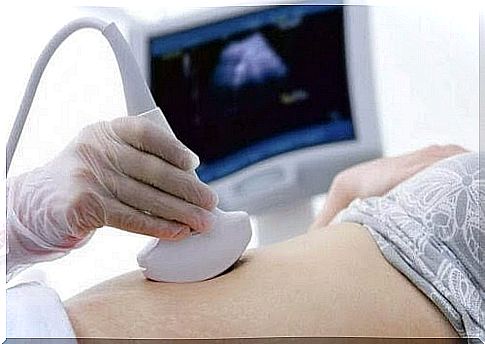Everything You Need To Know About Sonography

Find out everything you need to know about sonography and why it is much more than just a picture of your baby in the womb.
Pregnancy may seem like it will take forever when you go and wait for your baby and wonder what he or she will be. The sonographic examination is a special moment for that very reason – you finally get to see a picture of your baby!
With sonography, you can see your child, hear his or her heartbeat and see his or her growth. In addition to being exciting for the parents, however, it is all the more important to keep track of the baby’s development during pregnancy.
Keep reading to find out everything you need to know about sonography.
What is sonography and its purpose?
A sonogram is an image created by sound waves that “bounce” around the uterus and give a portrait of the baby on a screen. A conductive gel is applied to the abdomen to help the piezoelectric sensor (transducer) send out the waves.
There are also transvaginal sonograms, which usually take place during the first trimester. The method is similar to the previous variant, but the picture is taken via the vagina. It is not invasive, so you do not have to worry about it hurting your baby in any way.
The different sonograms are designed to answer different questions, so everyone can tell something new about your baby.

What you should know about sonography: Different types
The most common type of sonography used to monitor pregnancies is 2D (two-dimensional ultrasound). These can be difficult to “interpret” because they do not give a particularly clear picture.
In recent years, 3D sonography has become more popular, and these are designed to offer a better picture of the child. One of the biggest benefits of 3D sonograms is that they make it easier for professionals to see fetal abnormalities.
These images stand out by giving volume and depth to what you see in the womb.
Finally, there are also innovative 4D sonograms, which add movement to the 3D versions. It is a video produced by several 3D sonograms. This is the latest in ultrasound technology.
Neither 3D nor 4D sonograms are yet offered through general maternity care, which means you have to pay for them at clinics and private hospitals.
How many ultrasound examinations are done during pregnancy?
Worldwide, two or three sonograms are usually taken during a pregnancy. Sometimes more, but these mark the fetus’ greatest stages of development and help to keep track so that the fetus develops properly.
In Sweden, only an ultrasound is usually offered between weeks 18-20 of the pregnancy, but how many are offered and when varies between different county councils, regions and midwife clinics.
First sonogram
In larger parts of the world, the first sonogram is taken between six and 12 weeks of pregnancy and it confirms the pregnancy. In addition, it marks the first time future parents will see their child. It is also the first time they hear the baby’s heartbeat, which is one of the most emotional moments during a pregnancy.

This sonogram is also when the parents get to know the expected date of birth, as the sonography can date the pregnancy.
Second ultrasound
This occurs between 18 and 20 weeks of pregnancy. This is when you can get to know your child’s gender, if you so wish, because the genitals have now been formed.
In addition, you can see and hear the baby’s heartbeat again. The technician can also measure the child’s cranial diameter, femur length and the circumference of his or her abdomen. All these measurements aim to ensure the child’s good growth.
The third sonogram
This ultrasound is taken in some parts of the world between 33 and 34 weeks into the pregnancy. It is the last sonography examination and you take it to see that the fetus is well and developing properly.
The ultrasound looks for any late anomalies, while checking the baby’s growth and position before birth.
This latest survey provides a picture of the fully formed child, which can help parents get a clearer idea of what their child looks like.









